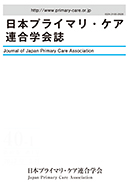Volume 40, Issue 1
Displaying 1-12 of 12 articles from this issue
- |<
- <
- 1
- >
- >|
-
2017Volume 40Issue 1 Pages 1
Published: March 20, 2017
Released on J-STAGE: March 25, 2017
Download PDF (106K)
-
2017Volume 40Issue 1 Pages 2-8
Published: March 20, 2017
Released on J-STAGE: March 25, 2017
Download PDF (375K) -
2017Volume 40Issue 1 Pages 9-15
Published: March 20, 2017
Released on J-STAGE: March 25, 2017
Download PDF (469K) -
2017Volume 40Issue 1 Pages 16-20
Published: March 20, 2017
Released on J-STAGE: March 25, 2017
Download PDF (282K) -
2017Volume 40Issue 1 Pages 21-26
Published: March 20, 2017
Released on J-STAGE: March 25, 2017
Download PDF (408K) -
2017Volume 40Issue 1 Pages 27-32
Published: March 20, 2017
Released on J-STAGE: March 25, 2017
Download PDF (313K) -
2017Volume 40Issue 1 Pages 33-37
Published: March 20, 2017
Released on J-STAGE: March 25, 2017
Download PDF (259K) -
2017Volume 40Issue 1 Pages 38-43
Published: March 20, 2017
Released on J-STAGE: March 25, 2017
Download PDF (812K)
-
2017Volume 40Issue 1 Pages 44-45
Published: March 20, 2017
Released on J-STAGE: March 25, 2017
Download PDF (212K)
-
2017Volume 40Issue 1 Pages 46-51
Published: March 20, 2017
Released on J-STAGE: March 25, 2017
Download PDF (414K)
-
2017Volume 40Issue 1 Pages 52-57
Published: March 20, 2017
Released on J-STAGE: March 25, 2017
Download PDF (318K)
-
2017Volume 40Issue 1 Pages 58
Published: March 20, 2017
Released on J-STAGE: March 25, 2017
Download PDF (96K)
- |<
- <
- 1
- >
- >|
